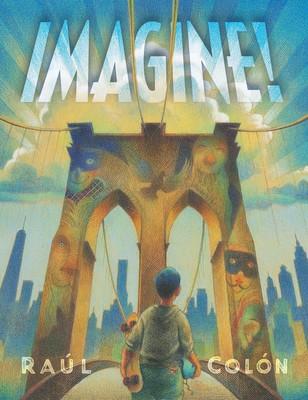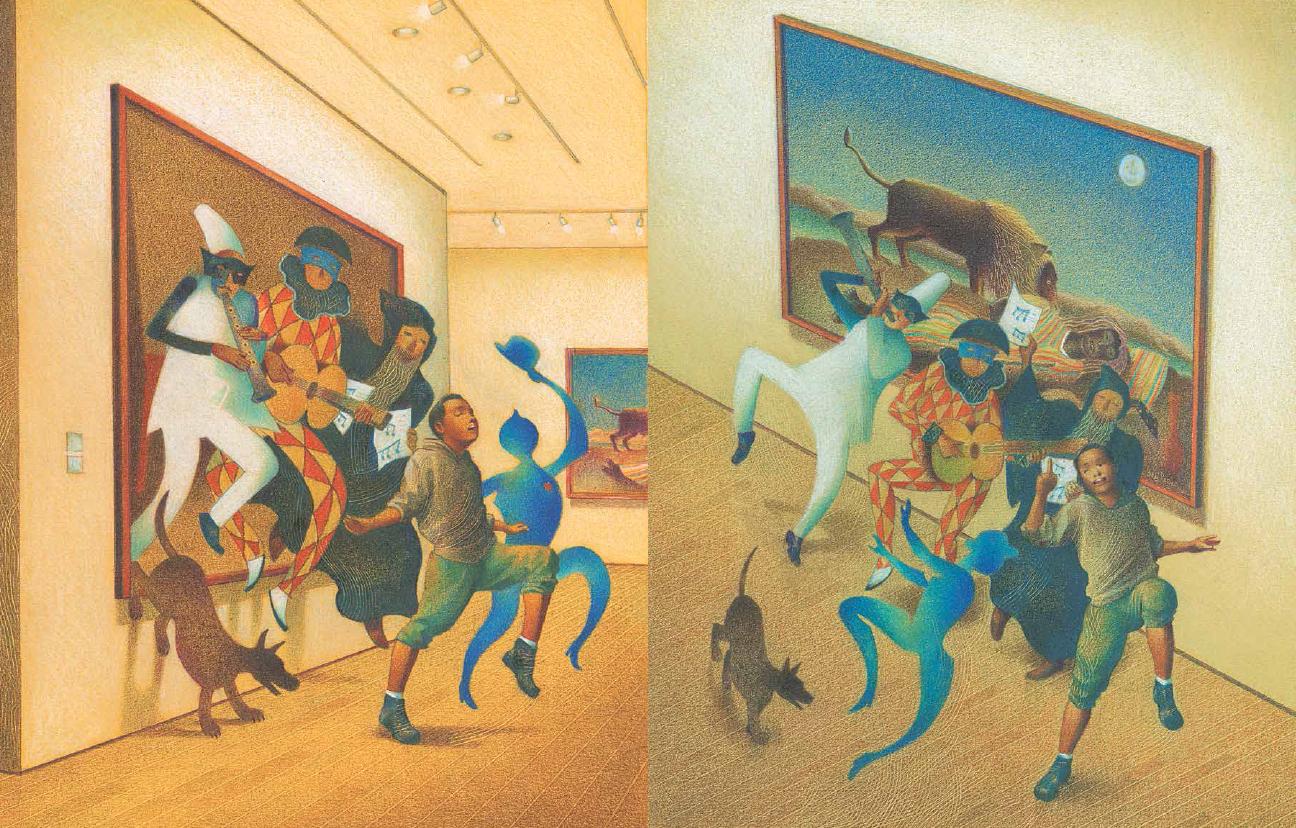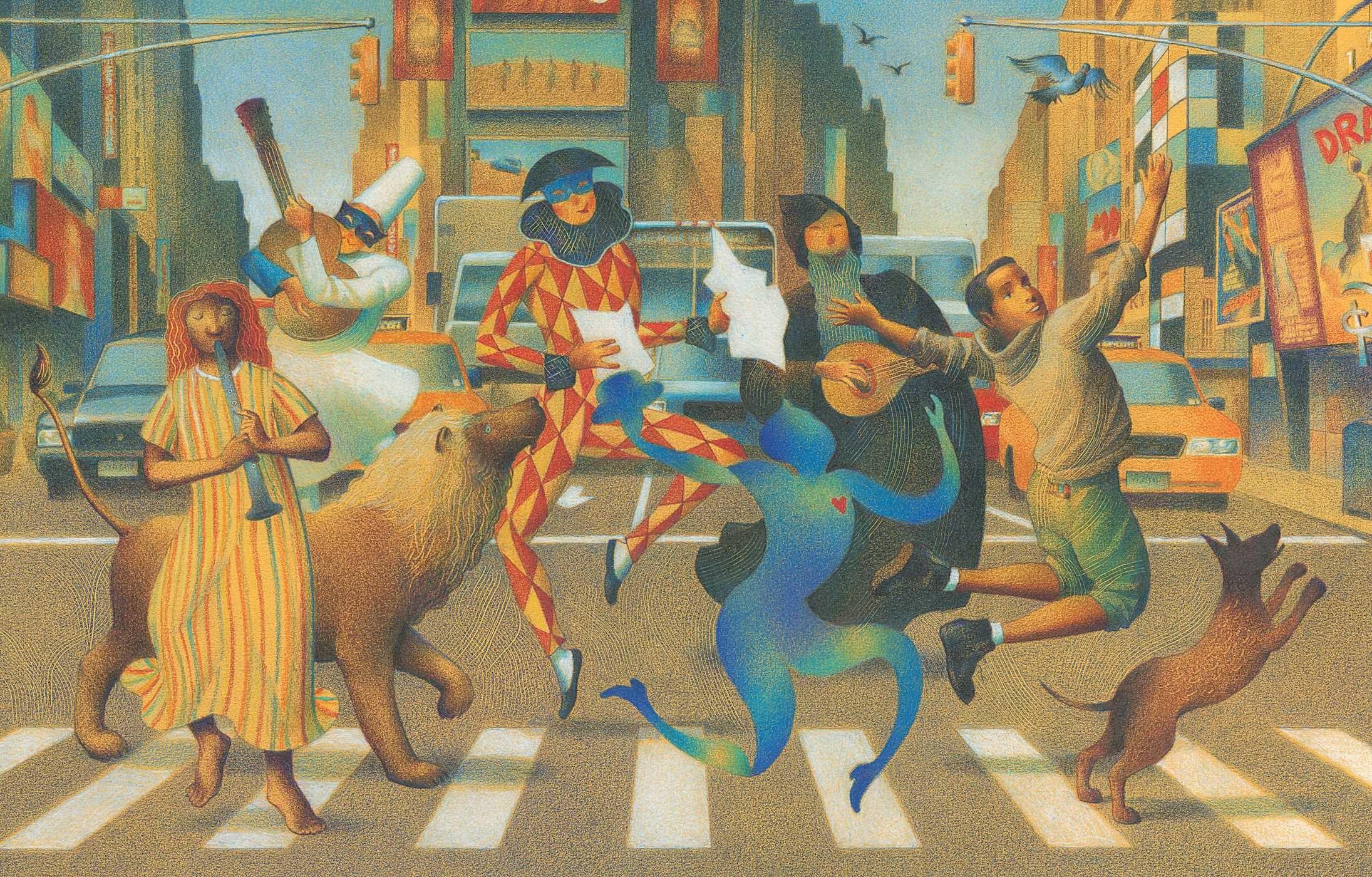Posted by Casey on Friday, Jan 11, 2019
 This week we are taking a look at Raúl Colón’s wordless title, 'Imagine'. Following a young boy as he travels to and through the Museum of Modern Art, 'Imagine' is a visual fantasy tour of New York and of individual creativity.
This week we are taking a look at Raúl Colón’s wordless title, 'Imagine'. Following a young boy as he travels to and through the Museum of Modern Art, 'Imagine' is a visual fantasy tour of New York and of individual creativity.
The book opens with the endsheets, where we see a box of chalk and are introduced to the color palette that Colón utilizes throughout. Our protagonist sets out helmet clad, chalk in pocket, with skateboard in hand, passing blank building facades, gliding over the Brooklyn Bridge, on his way to the MoMA. Once inside he checks his belongings and soon finds the three paintings with which he interacts. We see him staring at the works, awestruck, even clutching his head in apparent disbelief. Then, the paintings begin to step outside of their housings.

The first painting to eschew its frame and join our protagonist is 'Icarus' by Henri Matisse. He tips his cap to the young man and they dance together all the way to the next painting, Pablo Picasso's, 'Three Musicians'. The final painting to join this intrepid group is 'The Sleeping Gypsy' by Henri Rousseau. Together, all the characters from the paintings and our protagonist leave the MoMA and head out to explore greater Manhattan.
At the outset of the story, the illustrations rely on comic style panels to show movement, delineate time and to move the narrative forward at a fairly quick clip. The spreads when the protagonist is skateboarding on his way to the MoMa are particularly fast paced.

This paneled pacing technique really shines, however, once our protagonist has left the MoMA with the characters from the paintings.
Throughout this central section we see half and full spread, full bleed illustrations, that make ample use of the negative space to show off New York, and to allow the reader to discern what is happening through the movement and pacing of the gutters and page turns.
The absence of panels lends this central section a whimsical slowness, where the reader gets to dictate the pacing rather than feeling pushed forward. Once everyone is heading back to the MoMa we get more panels and the pace picks back up, almost like they're rushing against the clock to get back inside before the museum closes.
Colón has successfully adapted styles of famous artists to suit his own style and narrative purpose while simultaneously remaining true to the original artwork. The way the forms of Picasso's musicians shift in order to make them more human is a wonderful example of this--we see the original painting and then as the characters emerge they become more like Colón's protagonist in shape, but keep their Picasso-ness as well. The color palette serves to bridge this visual divide: when we're introduced to the paintings in the MoMA it is clear that Colón's color palette is in direct correlation to these three works. This further cements Colón's narrative as highlighting imaginative play utilizing and in response to art, as well as showcasing the way art can affect our perspectives and our creative processes.
What do you think? Is 'Imagine' the most distinguished picture book of 2018? Don't forget to vote for this year's ICPL Mock Caldecott by January 21st!


Touching and beautifully rendered in grayscale with occasional splashes of pink, this is a love story for everyone. If you have yet to be kicked to the curb by Laura Dean, it might be time to get dumped. -Casey